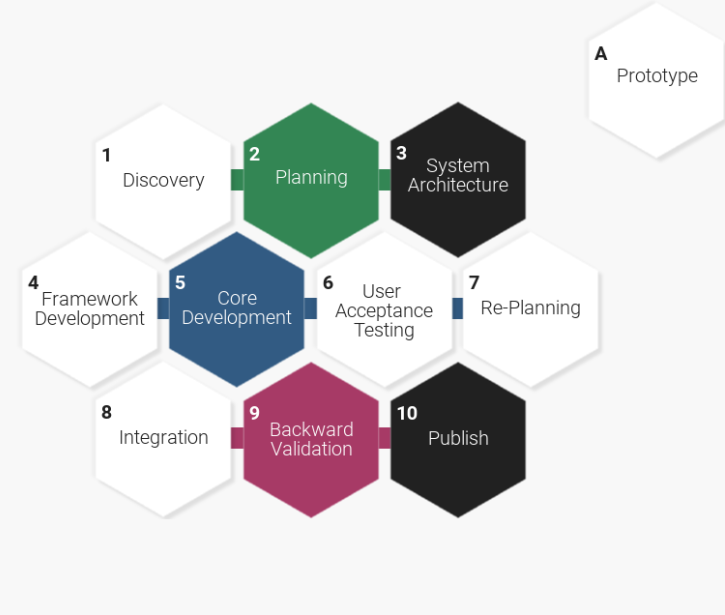Consistency matters even when you don't see it.
The science of lifetime software is our signature method of developing reliable solutions. We refined our method over 10 years, to consistently deliver software you can build your business on.

A proven, repeatable process.
Custom software is exactly that, a unique solution for unique problems, but a proven development process can give you predictable results.
More features, less downtime.
Instead of looking for bugs, a consistent development process frees up more time for features over bug hunting.
By using the science of lifetime software to build your solution, we can deliver a reliable product no matter how unique your problem is.

Discovery
Primary objective: To discover how your solution will positively affect the real world (your users, customers, business, etc).
Secondary objective: To identify exactly what your solution must do.

Planning
Primary objective: To create an overall project plan including people and time lines.
Secondary objective: To prioritize the features of your solution that add the most value.

System Architecture
Primary objective: To develop a technical overview of module and/or framework interaction within your solution.
Secondary objective: To develop an overview of software integration points to outside systems.

Framework Development
Primary objective: To develop a technical overview of module and/or framework interaction within your solution.
Secondary objective: To develop an overview of software integration points to outside systems.

Core Development
Primary objective: Filling in (development) of modules validated during the framework development phase.
Secondary objective: Is to produce validated software ready for first user testing.

User Acceptance Testing
Primary objective: Is to get the most recently developed modules into user hands.
Secondary objective: Is to produce a list of accepted features ready for production.

Re-Planning
Primary objective: Is to review the list of features and their relative priority.

Integration
Primary objective: Is to integrate the newest development with the existing system (if any)

Backward Validation
Primary objective: Is to verify previous tests (if any) of existing system.

Publish
Primary objective: Is to go-live with latest development after running all final checks.

Prototype
Primary objective: Is to quickly develop a working prototype to validate an idea or gauge user interest.
The primary objective for the science of lifetime software is to deliver reliability.
